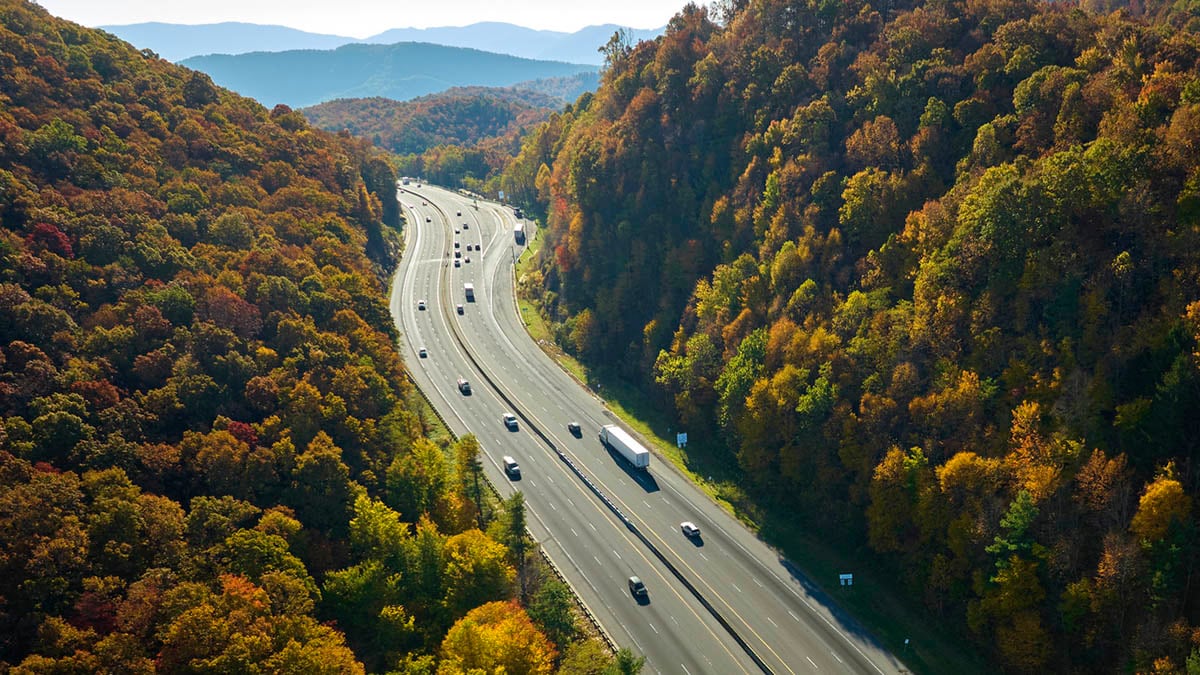What Is a Freeway?
According to the DOT, a freeway is “a divided arterial highway with full control of access and with grade separations at intersections.” Freeways are high-speed roads designed to carry large traffic volumes between urban areas with no access points at the same level as the roadway. Characteristics of a freeway include:
- Vehicles can only enter or exit through designated on-ramps and off-ramps.
- Uninterrupted traffic flow due to the absence of at-grade crossings with other roads, railways, or pedestrian paths.
- Higher speed limits due to the absence of traffic signals and intersections.
What Is a Highway?
The DOT says “highway” is “a general term for denoting a public way for purposes of vehicular travel, including the entire area within the right-of-way.” Highways are a broad road category that can include freeways and other types of roads for vehicle travel. Highway characteristics include:
- Highways can be 2-lane roads with wide shoulders.
- Vehicles might enter highways through crossings and intersections at the road level.
- Speed limits are higher than other roads. Still, they may be slower than freeway speeds because highways can have at-grade crossings, intersections, and traffic signals.
- Highways pass through urban, suburban, or rural areas, often serving as main arteries for shorter-distance travel within states.
Interstate and Expressway Definitions
Introducing “expressway” and “interstate” adds complexity to the question of highway vs. freeway.
Expressway — Expressways are similar to freeways. They are designed for high-speed vehicular traffic and have controlled access. However, the term “expressway” can sometimes refer to a broader range of controlled-access highways, including parts of the interstate system and other major roads that may not meet the complete standards of a freeway.
Interstate — The Interstate Highway System is a network of freeways spanning the entire country, connecting major cities and regions. These roads adhere to strict federal design standards and are part of the National System of Interstate and Defense Highways. The system was established when President Dwight D. Eisenhower signed the Federal-Aid Highway Act of 1956 and is a critical part of the country’s infrastructure, facilitating long-distance travel and commerce.
MORE: Best Commuter Cars and SUVs for 2024
Same Road, Different Name
Regional vocabulary plays a role in whether people refer to a major road as a “freeway,” “expressway,” or “highway.”
A Harvard Dialect Survey found that many common terms, including those for roadways, have different names depending on where you are in the U.S. The survey results indicated that most respondents across the U.S. referred to a big road that you drive relatively fast on as a “highway.” However, “freeway” was a common reply among West Coast respondents.
RELATED: Yield Sign: What Does It Mean?
Roadway Wrap-up
No matter what you call them in casual conversation, here’s a summary of the different types of high-speed roadways.
- All freeways, interstates, and expressways are highways, but not all highways are those types of roads.
- Freeways are a specific type of highway with no direct access from adjacent properties, no at-grade crossings, and no traffic signals.
- Highways can be any major road, including freeways and roads with traffic signals and direct access.
- Interstates are a subset of freeways and are part of a nationwide system.
- Expressways are controlled-access highways that may or may not meet the stricter criteria of a freeway.
Understanding these distinctions is essential for navigating the complex network of roads in the United States and appreciating the design considerations that go into creating a safe and efficient transportation system. Whether you commute to work on a local highway or use interstates for a long-distance road trip, the array of roadways in the U.S. plays a vital role in connecting people and places.
Read Related Articles:
- Should You Use Premium Gas?
- Do My Tires Need to be Replaced?
- Car Safety Features 101: Everything You Need to Know











